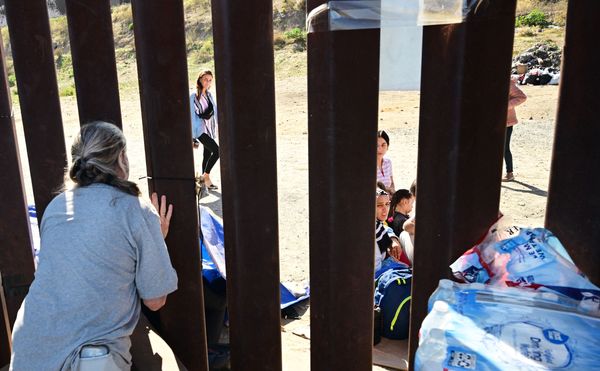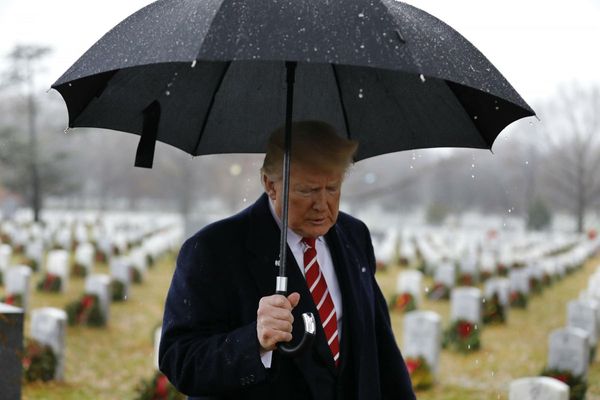People around Australia and in other Commonwealth countries have marked the death of Queen Elizabeth last week in all sorts of ways.
One of the most visible and coordinated has been the lowering of Australian flags on government buildings to half-mast.
But how long will they stay that way? Why are some other flags at half-mast as well?
And how does everyone know what to do with the flags in the first place?
Welcome to the world of flag protocols
Australia has laws governing national flags (the Flags Act 1953) and a Commonwealth Flag Officer, who works in the Department of Prime Minister and Cabinet and sends out notices about how flags at government buildings should be flown on special occasions.
On Friday, after the official announcement of Queen Elizabeth's death, the Flag Officer sent out a notice to all flag marshals in Australia and at Australian overseas posts (like embassies and high commissions).
"As a mark of mourning and respect and in accordance with protocol, the Australian National Flag should be flown at half-mast immediately and until further notice. Vice-Regal Standards are to remain at full-mast," the notice reads.
Vice-Regal Standards are the flags of each of Australia's state governors and the Governor-General.
Following tradition, the Australian National Flag will stay at half-mast until the day after the Queen's funeral.
What about other flags?
Friday's notice included instructions regarding other flags government buildings might also be flying.
They said if the Australian National Flag is lowered to half-mast, all other flags should also be flown at half-mast.
That's because under Australian National Flag Protocols, the Australian flag takes precedence over all other flags, and should be flown in the "position of honour".
The notice included an advisory that if flags of other nations were also being flown, permission should be sought from that country's diplomatic representatives, like an ambassador or embassy, to also lower that flag.
The Hobart City Council has been flying the Ukrainian flag recently, and had to contact the Ukrainian Embassy before that flag was lowered.
Why are flag protocols taken so seriously?
David Hughes, the deputy official secretary to Tasmanian Governor Barbara Baker, is very familiar with notices from the Commonwealth Flag Officer.
"We get them for any significant ceremonial day, so for things like Anzac Day and Remembrance Day a notice comes out and the reason for that is to remind people of what the protocols are and of when to move flags from various different positions," Mr Hughes said.
He said it's important to make sure the flags visible at Government House are sending the correct message.
"Flags have been around for a very long time and they're really quite important symbols, of the nation, of the state and of the organisations that fly them, and so … they should always be treated with respect and dignity.
"There are some very specific protocols about ensuring that these very important national and state symbols [are] treated in the appropriate manner."
Why was the Australian flag raised for a while on Sunday?
The Commonwealth Flag Officer sent out another notice on Sunday requiring the flag to be flown at full-mast for the proclamation of the accession of King Charles III.
In Australia, that was announced by the Governor-General at 12pm on Sunday at Parliament House in Canberra.
The notice said the flag should fly at full mast from that time until dusk, then be lowered again to half-mast until the day after Queen Elizabeth's funeral.
What about the Aboriginal and Torres Strait Islander flags?
Because protocol dictates that the Australian National Flag should never be lower than other flags, when it is lowered to half-mast, so are all other flags, including the Aboriginal and Torres Strait Islander flags.
Some Aboriginal groups are unhappy about their flag being lowered as a sign of mourning the Queen's death.
The Tasmanian Aboriginal Centre's campaign manager, Nala Mansell, said Aboriginal people should be consulted about what is done with their flag.
"The Aboriginal flag is a symbol of Aboriginal people, Aboriginal land and Aboriginal history," said Ms Mansell.
"The Queen of England was a symbol of the head of an institution which destroyed the lives of Aboriginal people and which was responsible for the invasion of our country.
"We're talking about symbols here and what they represent.
"When it comes to the head of an institution responsible for such horrific crimes against Aboriginal people, surely we can all acknowledge that the Aboriginal flag would not be lowered to signify the mourning of something that symbolises so much of what we lost."
What other flag protocols does Australia have?
Lots.
If want to find out everything there is to know about Australia's National Flag protocols, you can download the Australian Flags booklet or ask your local MP or Senator for a copy.
Here's a brief selection of dos and don'ts, just for the Australian National Flag:
- Do not fly the flag at night unless it is illuminated
- Do not fly two flags from the same flagpole
- Do not fly the flag upside down, even as a signal of distress
- Raise the flag briskly and lower it ceremoniously
- Do not fly the flag if it is damaged, faded or dilapidated
How to dispose of a flag
There are also rules for dealing with damaged or faded flags — you can't just throw them in the bin.
Instead, the flag should be "destroyed privately and in a dignified way".
This may be by cutting the flag into small unrecognisable pieces, putting it in a sealed bag or container and then putting it in the bin.
Alternatively a "flag retirement ceremony" can be conducted.







